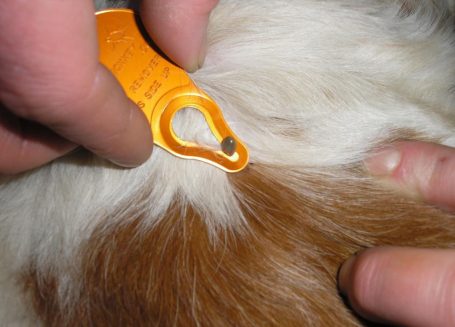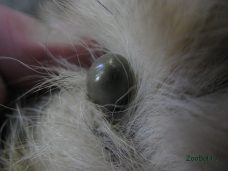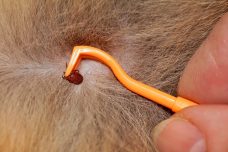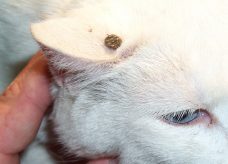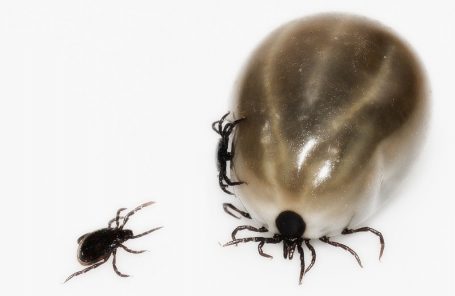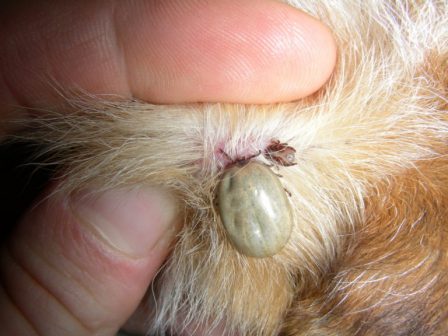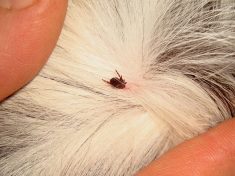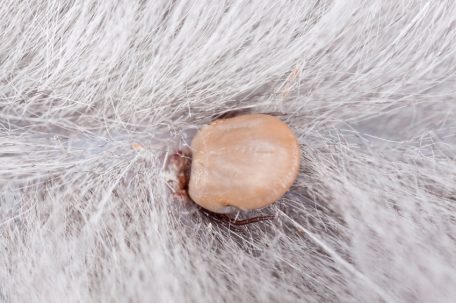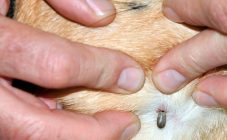Ixodid ticks are dangerous not only for people, but also for pets. Cases of cat bites are less common than in dogs, but the consequences are also dire. We will learn how to remove a tick from a cat so as not to harm the pet.
Material Content:
What are dangerous ticks for cats?
Ticks are carriers of dangerous infectious and viral diseases that can cause paralysis and death of the pet. Pathogenic microorganisms penetrate at the time of sucking blood along with saliva, so only one bite can become fatal for a cat.
A sucking insect can cause these diseases:
- pyroplasmosis is a parasitic disease that is accompanied by high body temperature, shortness of breath and heart rhythm disturbance;
- hemobartonellosis - infectious anemia;
- borreliosis - Lyme disease;
- teileriosis - damage to red blood cells and lymphocytes in the liver, lungs, spleen, kidneys and other organs;
- tularemia is an infectious disease accompanied by fever and intoxication symptoms.
All diseases are deadly.
Where does the parasite come from?
Ixodid ticks cling to animals while walking on the street. They live on trees, in bushes and grass. Parasites feel their prey at a distance and wait for a convenient moment to dig into it.
Note! After each arrival from the street, it is necessary to carefully examine the cat's body for the presence of a tick. The sooner you remove it, the lower the chance of infection.
But can a tick appear on a cat’s body if it doesn’t go out? Theoretically possible, but in practice it is rare. An insect can move to a pet from a person or from clothes.

Tick Pick Signs
A tick for a bite selects the softest tissues, inconspicuous places where a pet can’t get either with its paw or mouth. This is the area behind the ears, withers, stomach, groin, armpit area.
It is impossible to visually notice a tick. It is tiny, only 3-4 mm in length. But after he begins to suck blood, the parasite increases to 1.5 cm, acquires a red tint. At this moment, it becomes noticeable to the owners.
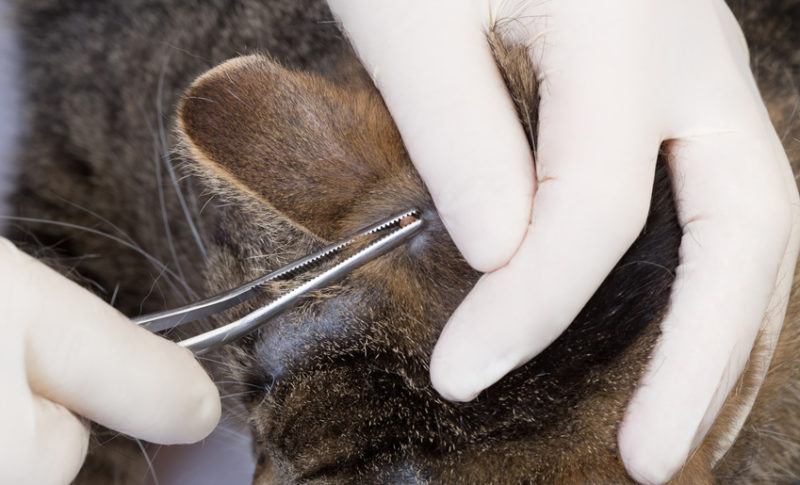 The tick after saturation can independently leave the cat’s body, but in this case, the fact of a bite can be determined by the following symptoms:
The tick after saturation can independently leave the cat’s body, but in this case, the fact of a bite can be determined by the following symptoms:
- a red spot that the pet is constantly combing;
- swelling of the skin, suppuration of the bite site is possible;
- drowsiness and weakness, refusal of games;
- loss of appetite;
- increase in body temperature to 41-42 ˚С;
- yellowness of the sclera;
- nausea and vomiting, signs of dehydration;
- emaciation.
 If such symptoms appear, the cat needs to be shown to the veterinarian, since they can also indicate other diseases.
If such symptoms appear, the cat needs to be shown to the veterinarian, since they can also indicate other diseases.
Note! Severe manifestations are coughing and shortness of breath, which indicates respiratory and heart failure.
What can not be done?
If a cat is bitten by a tick, then you should immediately try to remove it, but you need to do it correctly. There are techniques that are not acceptable for removing the parasite from the body of the pet.
In no case should you use sunflower oil, kerosene or other oily substances. They block the access of oxygen, so the tick can die in the body, which will lead to a likely infection of the pet. Alcohol is also banned. It irritates the parasite, makes it activate and penetrate deeper into the skin.
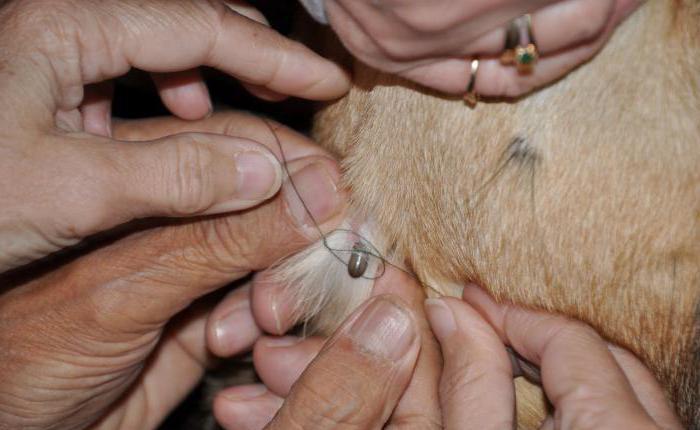 The following methods cannot also be used for extraction:
The following methods cannot also be used for extraction:
- crush the tick;
- pick it out with a needle or any other sharp object;
- try to pull sharply with tweezers or fingers, holding on to the body of the tick;
- cauterize with a cigarette, iodine or brilliant green;
- apply vinegar, ammonia or other corrosive liquids.
If there is any doubt that it will be possible to independently remove the parasite, you must immediately go to the veterinary clinic. It is not worth waiting for the tick to be saturated and fall off.

Extraction methods
You can remove the tick at home, but you need another pair of hands that would hold the pet. During the procedure, the animal should sit still.
Note! In order not to get infected yourself, it is worth working with gloves.
It is possible to remove the tick from the cat with tweezers with thin ends, a loop from a thread or fishing line. You need to act carefully and slowly, the movements should be smooth.
It is necessary to capture the tick at the base of the body, closer to his head, that is, to the place where he dug into the skin. It is necessary to remove the parasite by loosening from side to side or by rotational movements, twisting it from the body. It is necessary that he gradually unhook himself, and not forcibly pull it out.
The second way to remove the parasite is with the help of a special pliers. This device can be purchased at a veterinary pharmacy. It is intended for twisting the parasite from the body. At its end there is a hook that you need to pick up the tick at the base, then slowly twist in a counterclockwise direction.
If the removal of the tick in the cat was successful, it is necessary to place the parasite in a glass container and take it to the laboratory. This is necessary in order to determine what viruses and infections he is infected with. If it turns out that the tick is a carrier of dangerous diseases, the cat needs medical attention.
Processing after removal of the parasite
After extraction of the parasite, antiseptic treatment is important. The bite site should be immediately lubricated with alcohol or iodine to cauterize the wound and disinfect it. You can apply a thin layer of ointment containing antibiotics.
If it is suddenly noticeable that the tick was partially removed, and a paw or proboscis remained in the body, it is necessary to remove these parts. This can be done with a pre-sanitized needle. It is necessary to pick out parts of the tick, like a splinter. If there is any doubt that this will be possible to do, urgently to the clinic.
After removal, all used tools must be disinfected, wash their hands with soap and water.
Infection prevention
To prevent a bite, you can use special antiparasitic collars, sprays and drops from ticks. You need to use these funds correctly, otherwise you can get an intoxication or an allergic reaction in a cat.
Note! Drops and sprays from ticks can be used once a season.
When choosing an antiparasitic agent, you must read the instructions for use. It is important that ixodid ticks are mentioned in the indications for use.


